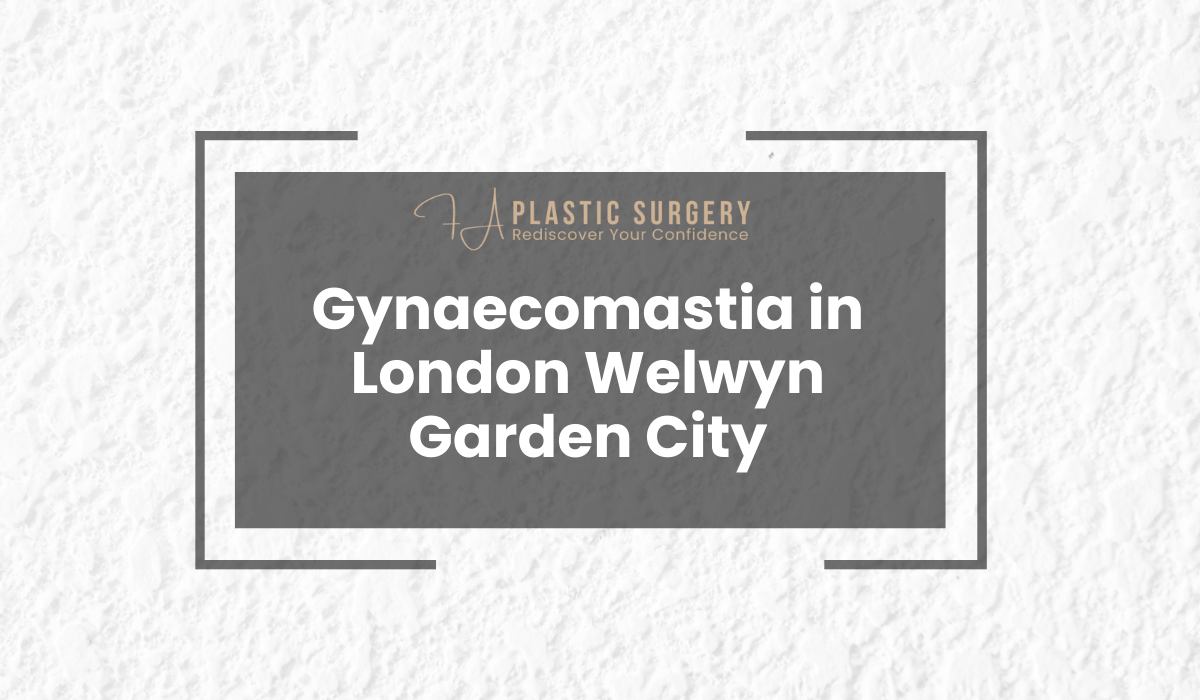Gynaecomastia: Table of Contents
-
- Understanding Gynecomastia: Causes and Symptoms
- What is Gynecomastia Surgery? An In-depth Look
- Surgical Techniques for Effective Gynecomastia Treatment
- How Much Does Gynecomastia Surgery Cost in London?
- The Gynecomastia Surgery Procedure: Step-by-Step Guide
- Recovery Time And Post Operative Care For Gynecosmastia Surgery
Understanding Gynecomastia: Causes and Symptoms
Gynecomastia is a medical condition characterized by the enlargement of breast tissue in males. This can be a source of significant emotional distress and self-consciousness. The causes of gynecomastia are varied, ranging from hormonal imbalances to certain medications and underlying health conditions.
Hormonal imbalances, particularly an increase in estrogen or a decrease in testosterone, are common culprits. Medications such as anti-androgens, anabolic steroids, and even some antibiotics can contribute to the development of gynecomastia. Additionally, conditions like liver disease, kidney failure, and hyperthyroidism may also play a role.
The symptoms include swollen breast gland tissue and tenderness in the breast area. In some cases, individuals may also experience pain or nipple discharge. Early diagnosis is essential for effective treatment and management.
What is Gynecomastia Surgery? An In-depth Look
Gynecomastia surgery, also known as male breast reduction surgery, aims to reduce the size of enlarged male breasts. This procedure helps restore a flatter and more traditionally masculine chest contour.
The surgery involves removing excess fat, glandular tissue, and sometimes skin from the chest area. Depending on the severity of the condition, liposuction alone may suffice for cases dominated by fatty tissue. However, excision techniques are often required when glandular breast tissue or excess skin must be removed.
This surgical intervention not only improves physical appearance but also boosts self-esteem and confidence levels. Patients should consult with experienced surgeons like Mr Foiz Ahmed to determine their suitability for this procedure.
Surgical Techniques for Effective Gynecomastia Treatment
Liposuction
Liposuction is commonly used when gynecomastia is primarily due to excess fatty tissue. Small incisions are made through which a thin tube called a cannula is inserted to break up and suction out fat deposits.
Excision Techniques
Excision techniques are necessary when glandular breast tissue or excess skin needs removal. This method requires larger incisions but allows for more precise contouring of the chest area.
Combination Approach
In many cases, surgeons employ both liposuction and excision techniques to achieve optimal results. This combination approach ensures that both fatty deposits and glandular tissues are effectively addressed.
Expert Insight:
A consultation with Mr Foiz Ahmed will help determine which technique is best suited for your specific case of gynecomastia.
How Much Does Gynecomastia Surgery Cost in London?
The cost of gynecomastia surgery varies depending on several factors including the complexity of the procedure, surgeon’s expertise, and hospital fees. On average, patients can expect to pay between £4,000 to £6,000 for this surgery in London.
Factors Influencing Cost:
Surgical Fees: Surgeon’s experience and reputation play a significant role in determining surgical fees.
Hospital Charges: These include operating room costs and post-operative care.
Anesthesia Fees: Administered by qualified anesthetists.
Pre-Operative Tests: Blood tests or imaging studies may be required before surgery.
For accurate cost estimates tailored to your needs, it’s advisable to schedule a consultation with Mr Foiz Ahmed.
The Gynecomastia Surgery Procedure: Step-by-Step Guide
Preoperative Consultation
Your journey begins with an initial consultation where your medical history will be reviewed. This includes any medications you’re taking or previous surgeries you’ve had.
Anesthesia Administration
The procedure usually takes place under general anesthesia although local anesthesia with sedation might be an option depending on individual circumstances.
Surgical Incisions
The type of incision depends on whether liposuction alone will suffice or if excision techniques are needed:- Liposuction Incisions: Small incisions around the areola or along natural creases.
– Excision Incisions: Larger cuts around the edge of the areola or along natural creases.
– Combination Approach: A mix of both methods as deemed necessary by your surgeon.
Tissue Removal & Contouring
The surgeon then removes excess fatty tissues via liposuction cannulas while glandular tissues require direct excision using specialized instruments ensuring minimal scarring post-recovery period.

